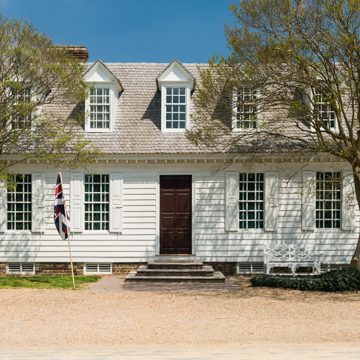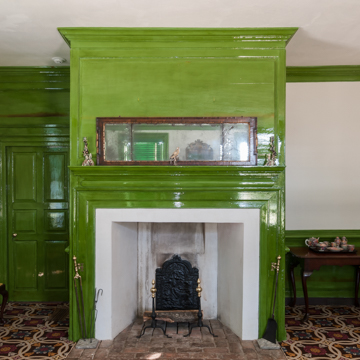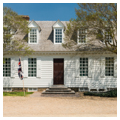Armorer John Brush built this as a center-passage house, ruder than the James Geddy House, about 1719 and added the left rear (northeast) wing one or two years later. Between 1729 and 1742 builder Henry Cary, Jr., remodeled it to make both the public and private spaces more refined. The stair, unusually rich for a Virginia house of this scale, dates from Cary's refurbishing. The house reached its present appearance in the decade before the Revolution, when Mayor Thomas Everard added wainscoting, wallpaper, and at least eight different paint colors.
You are here
Brush-Everard House
c. 1719. c. 1721, addition. c. 1729–1742, remodeling. c. 1769–1773, renovation. 1949–1951 and 1993–1994, restoration. Palace Green north of Nicholson St.
If SAH Archipedia has been useful to you, please consider supporting it.
SAH Archipedia tells the story of the United States through its buildings, landscapes, and cities. This freely available resource empowers the public with authoritative knowledge that deepens their understanding and appreciation of the built environment. But the Society of Architectural Historians, which created SAH Archipedia with University of Virginia Press, needs your support to maintain the high-caliber research, writing, photography, cartography, editing, design, and programming that make SAH Archipedia a trusted online resource available to all who value the history of place, heritage tourism, and learning.

















